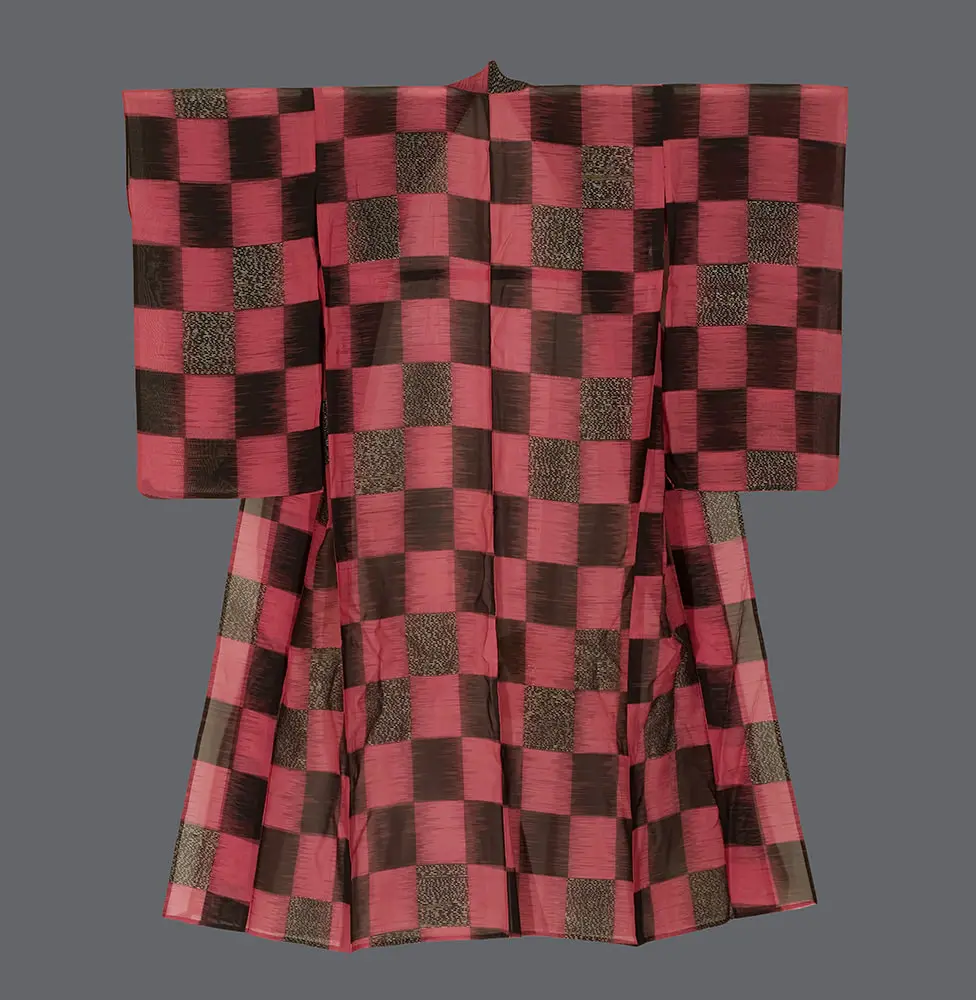This meisen kimono exemplifies the bold geometric aesthetic that emerged during Japan's modernization era, reflecting influences from both Art Deco and Bauhaus movements that were gaining international prominence at the time. The textile features a dynamic checkerboard pattern rendered in vibrant coral-pink and deep forest green, with select squares incorporating intricate textural variations—some displaying fine striations or cross-hatching effects, while others showcase the metallic silver threading. This geometric composition represents a significant departure from traditional Japanese textile motifs, embracing the machine age's emphasis on industrial precision and modernist design principles.
The checkerboard or ichimatsu pattern itself carries cultural significance in Japanese aesthetics, traditionally symbolizing prosperity and continuity through its endless, interlocking squares. However, this particular interpretation transforms the classical motif through its bold color palette and incorporation of synthetic fibers alongside silk, reflecting Japan's embrace of technological innovation during the interwar period. The meisen weaving technique, which allowed for more affordable production of colorful, complex patterns, democratized fashion and enabled the widespread adoption of such avant-garde designs. The juxtaposition of the warm coral tones against the cool, deep greens creates a vibrant optical tension that speaks to the era's fascination with color theory and psychological impact of design, while the metallic accents add a luxurious, almost industrial glamour that epitomizes the sophisticated modernity of the period's Japanese textile arts.
There are tiny silk splits on the shoulder crease near the collar and at the edge of the selvedged hem.
.avif)










